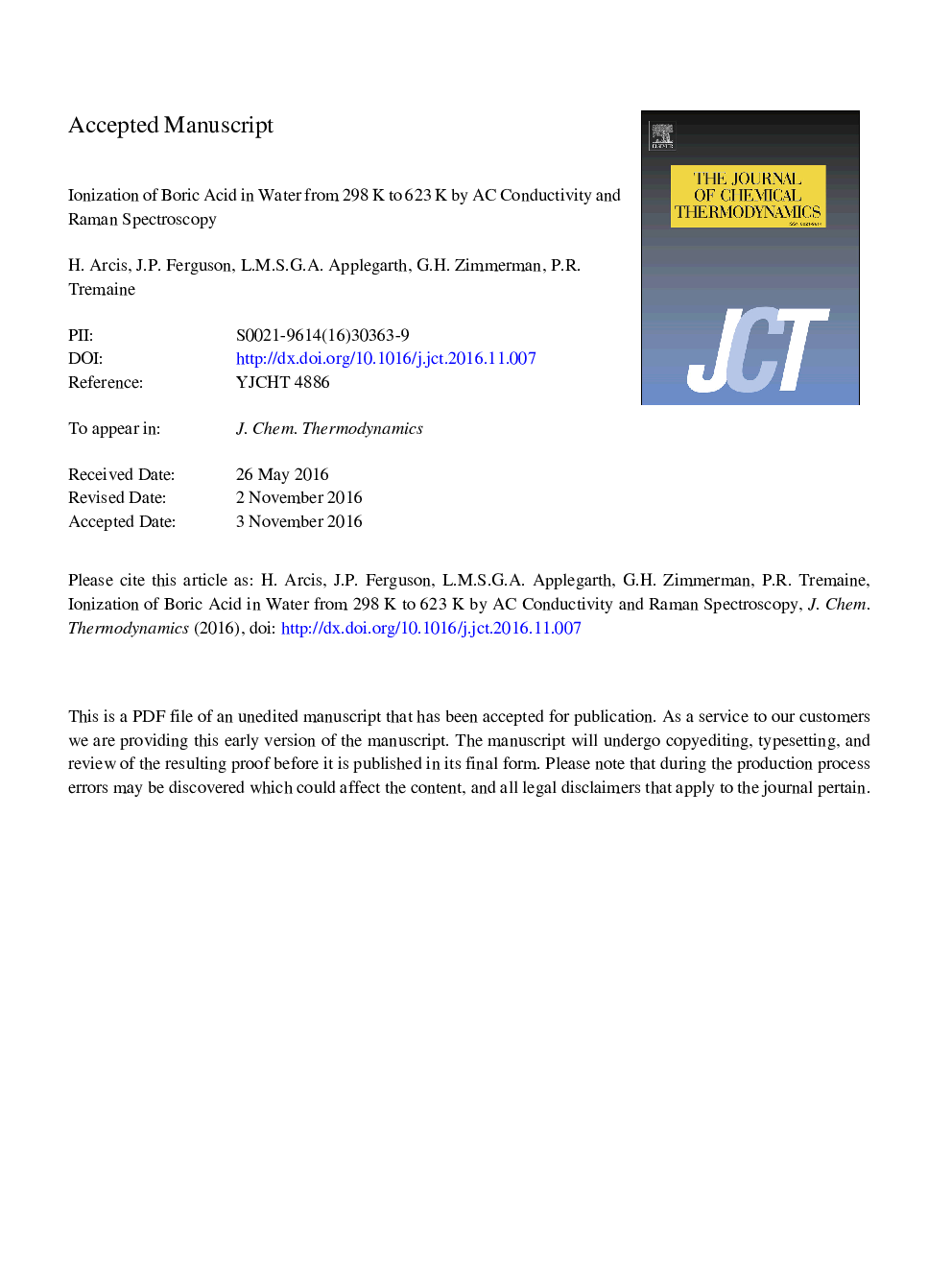| Article ID | Journal | Published Year | Pages | File Type |
|---|---|---|---|---|
| 4907377 | The Journal of Chemical Thermodynamics | 2017 | 48 Pages |
Abstract
Boric acid is used in the primary coolant of pressurized water nuclear reactors (PWRs) as a neutron absorber to control the reactor efficiency. Accurate thermodynamic and transport properties are needed to model the boron precipitation reactions in fuel deposit crevices, which adversely affect the neutron flux. Here, we report (i) new values for the boric acid ionization constant that have been measured from T = 298 K to T = 623 K at a constant pressure p â¼Â 20 MPa using a unique high-precision flow-through AC electrical conductance instrument and (ii) quantitative reduced isotropic Raman spectra for a â¼1 molal boric acid aqueous solution from T = 298 K to T = 623 K at a constant pressure p = 25 MPa. Frequency-dependent electrical conductivities of aqueous solutions of boric acid have been determined over ionic strengths from 10â4 to 10â1 mol·kgâ1. The concentration-dependent experimental molar conductivities, Î, were analysed with the Turq-Blum-Bernard-Kunz (“TBBK”) ionic conductivity model to yield values for the ionization constant of boric acid, Kb11, to an accuracy of ±10% at T = 623 K and ±5% at T ⩽ 600 K. These compare well with extrapolated values from accurate potentiometric measurements at temperatures up to 563 K and steam saturation pressures. These results also confirm the validity of the new 2006 IAPWS (International Association for the Properties of Water and Steam) formulation for the ionization constant of water, pKw. The Raman results did not show any evidence of metaboric acid formation under hydrothermal conditions.
Related Topics
Physical Sciences and Engineering
Chemical Engineering
Chemical Engineering (General)
Authors
H. Arcis, J.P. Ferguson, L.M.S.G.A. Applegarth, G.H. Zimmerman, P.R. Tremaine,
